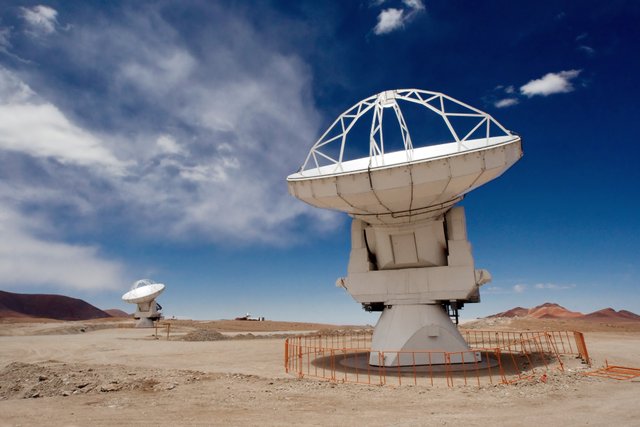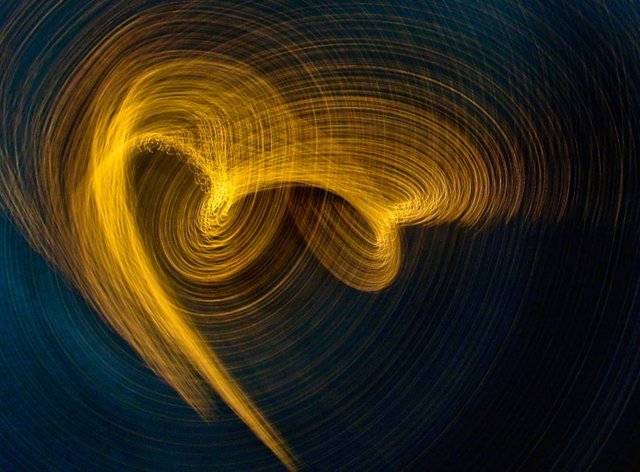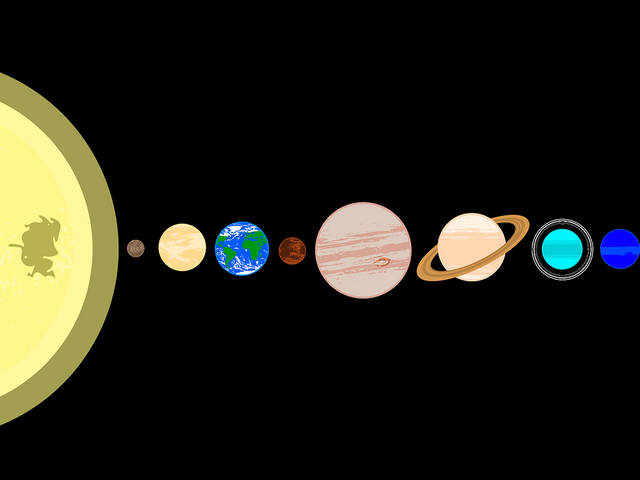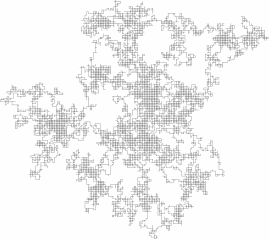Da Vinci Times #9.4
The most ancient oxygen
The antennas of the Alma radio telescope, in Chile, enabled us to observe the presence of oxygen in a galaxy distant 13.3 billion light years. A sensational discovery, because, unlike hydrogen, oxygen is an element that has not been generated during the Big Bang.

Imagine CC0 Creative Commons - Source
The oxygen is generated in the nucleus of the stars, during the nuclear processes that take place under very high temperature and pressure conditions. The presence of oxygen in such ancient galaxy means that the first stars were born very early in the history of the universe: considering that the time needed to produce oxygen and then spread it into space is a few hundred million years, it is easy to date back to the moment when the first stars were formed. Using this informations, astronomers have discovered that the first stars were formed 250 million years after the Big Bang, then in a very young universe.
Photons from two entangled atoms
A group of researchers managed to generate photons using two atoms placed in an entanglement state, being able to very well measure the interactions between the two particles.
 Imagine CC0 Creative Commons - Source
Imagine CC0 Creative Commons - Source
The entanglement is a physical phenomenon that exists only at the atomic level, and it is a correlation between particles, which somehow remain "linked" to each other regardless of distance.
What emerged from this study is that the interference produced by two photons produced using entangled atoms is different from that obtained by two normal unrelated photons. This result allows to better characterize the state of entanglement, but not only. The prepared physical system is very sensitive to magnetic fields, and this study could provide very valid theoretical tools to build extremely accurate magnetometers.
Planet nine
In 1781, Uranus was discovered far from the position expected by mathematical calculations. Thanks to its "wrong" orbit, it was then identified the presence of another great planet, Neptune.

Imagine CC0 Creative Commons - Source
Now, a new study has revealed the existence of 2015 BP519, a dwarf planet that revolves around the sun on a very inclined plane compared to the equatorial one. As in 1781, the planetologists have hypothesized the presence of another great planet near 2015 BP519 that is influencing its orbit, making it so "strange". The presence of a ninth large planet not yet observed has already been hypothesised in the scientific community a couple of years ago, but to date there is no evidence.
Post of the day

Imagine CC0 Creative Commons - Source
In biology and chemistry we often hear of passive diffusion, but it is not always easy to understand what it really represents. Today, @dexterdev, try to explain it to us through the use of a 2D model obtained with the "random walks" method.

Immagine CC0 Creative Commons, si ringrazia @mrazura per il logo ITASTEM.
CLICK HERE AND VOTE FOR DAVINCI.WITNESS
Keep in mind that for organizational reasons it’s necessary to use “steemstem” and “davinci-times” tags to be voted.
@aboutcoolscience - @spaghettiscience - @rscalabrini
L’ossigeno più antico
Grazie alle antenne del radiotelescopio Alma, in Cile, è stata osservata la presenza di ossigeno in una galassia distante 13.3 miliardi di anni luce. Una scoperta sensazionale, perchè, al contrario dell’idrogeno, l’ossigeno è un elemento che non si è generato durante il Big Bang.

Imagine CC0 Creative Commons - Source
L’ossigeno viene generato nel nucleo delle stelle, durante i processi di fusione nucleare che avvengono in condizioni di temperatura e pressione altissime. La presenza di ossigeno in una galassia così antica significa che le prime stelle sono nate molto presto nella storia dell’universo: considerando che il tempo necessario per produrre ossigeno e poi riversarlo nello spazio è di qualche centinaio di milioni di anni, è facile risalire al momento in cui le prime stelle si sono formate. Facendo i conti gli astronomi hanno scoperto che le prime stelle si sono formate 250 milioni di anni dopo il Big Bang, quindi in un universo giovanissimo.
Fotoni da due atomi entangled
Un gruppo di ricercatori è riuscito a generare dei fotoni utilizzando due atomi posti in uno stato di entanglement, riuscendo a misurare molto bene le interazioni tra le due particelle.
 Imagine CC0 Creative Commons - Source
Imagine CC0 Creative Commons - SourceL’entanglement è un fenomeno fisico esistente solo a livello atomico, e si tratta di una correlazione tra particelle, che restano in qualche modo “legate” tra di loro a prescindere dalla distanza.
Quello che è emerso dallo studio è che l’interferenza prodotta da due fotoni prodotti utilizzando atomi entangled è diversa da quella prodotta da due normali fotoni non correlati. Questo risultato permette di caratterizzare ancora meglio lo stato di entanglement, ma non solo. Il sistema fisico preparato è molto sensibile ai campi magnetici, e questo studio potrebbe fornire strumenti teorici molto validi per costruire magnetometri estremamente precisi.
Il pianeta nove
Nel 1781 Urano venne scoperto in un punto lontano da quello previsto attraverso i calcoli matematici. Grazie alla sua orbita “sbagliata” venne allora individuata la presenza di un altro grande pianeta, Nettuno.

Imagine CC0 Creative Commons - Source
Ora, un nuovo studio ha rivelato l’esistenza di 2015 BP519, un pianeta nano che ruota attorno al sole su un piano molto inclinato rispetto a quello equatoriale. Come accaduto nel 1781, i planetologi hanno ipotizzato la presenza di un altro grande pianeta nei pressi di 2015 BP519 che stia influenzando l’orbita di quest utltimo rendendola così “strana”. La presenza di un nono grande pianeta non ancora osservato è già stata ipotizzata nella comunità scientifica un paio di anni fa, ma ad oggi ne mancano i riscontri.
Post del giorno

Imagine CC0 Creative Commons - Source
In biologia e in chimica si sente spesso parlare di diffusione passiva, ma, talvolta, non è semplice capire cosa questa rappresenti davvero. Stasera, @dexterdev, prova a spiegarcelo attraverso l’uso di un modello 2D ottenuto con il metodo della “random walks”.

Immagine CC0 Creative Commons, si ringrazia @mrazura per il logo ITASTEM.
CLICK HERE AND VOTE FOR DAVINCI.WITNESS
Si ricorda che per motivi organizzativi è necessario utilizzare le tag “steemstem” e “davinci-times” per essere votati.
@aboutcoolscience - @spaghettiscience - @rscalabrini</center
I would like to suggest something. First, please let me say that what you do is really cool. In particular, featuring some scientific article of the moment throughout the Davinci Times is something that I really appreciate. I read them a lot (not all of them but many let's say).
Next, I was thinking about something. Today I have refused to write a referee report for a journal that was not open access. For the same reason of making science accessible to anyone, what about only featuring articles that are open access within the Davinci Times? What do you think? I think this is something we scientist should do.
And too bad for Nature and Science. But they are way too expensive! Many good articles are available for free :)
I think it's a very nice idea, we'll think about what can be done! Maybe finding a "middle ground" with what we are doing now...
I am not sure to get what you mean by middle ground? Either a journal is open access or it is not, isn't it? :)
Thank you for your suggestion! I think it would be more valuable for the readers if we only feature articles that they can read (thus open access), we will definitely make an effort in that direction! ;)
I think the entire scientific community should move in that direction... Slowly slowly we may get there (hopefully).